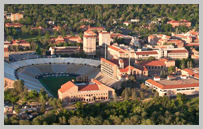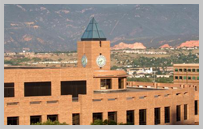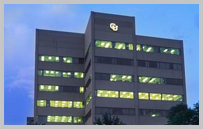The Automatic Transfer Process for CU Foundation Funds initiative streamlines the process that organizational units use to request funds from the CU Foundation in order to:
- Redirect resources to understanding and monitoring compliance with donor restrictions
- Maximize University cash flow by minimizing cash deficits caused by untimely transfers requests
This initiative involves a modification to the Finance System that:
- Calculates the transfer amount to be requested from the CU Foundation
- Interfaces with the CU Foundation to process the related the wire transfer
- Records the wire transfer receipt in the university's Finance System at the FOPPS (Speedtype) level
The process will be similar to the current Letter of Credit process (LOC) for Sponsored Projects and will utilize the new modification for Gift Attributes. Essentially, the automatic transfer process:
- Identifies the cash deficit of each FOPPS (Speedtypes) that have a Gift Attribute of Foundation Related checked,
- Prepares a transfer request for the FOPPS (Speedtypes) equal to the cash deficit in the FOPPS times the threshold(defined below) limited by tolerance(defined below) and available balance in the CU Foundation fund (defined below),
- Submits the transfer request to the CU Foundation,
- Records (posts) the cash receipt and related gift revenue in the FOPPS (Speedtypes) after the CU Foundation confirms the transfer.
Transfers will be on the 1st, 2nd and 3rd Monday and the last working day of each month. The calculation occurs fours days before the transfer. So, the process will calculate transfer amounts on Thursday night for a Monday transfer and will record the cash receipt in the respective FOPPS (Speedtypes) on the following Monday night. Due to bank and University holidays, these days may vary, so a calendar is available at {Wire Transfer Calendar}.
At the end of every month, the tolerance (defined below) will be set to zero ($-0-).
Threshold
The threshold is a percentage of the CU Foundation account available balance(defined below) that will be retained at the University. This amount is negotiated by the University Treasurer and the Foundation to maximize returns at both organizations. At initial project implementation, the threshold will be set to 0%. Therefore, the University will always have a $0 cash balance after processing a transfer from the CU Foundation. For example, if the threshold is set to 1% for a CU Foundation account in the amount of $100,000, then the University would have a cash balance of $1,000 after receiving the transfer from the CU Foundation.
Tolerance
The tolerance is a dollar value for both an upper and lower limit that restricts the amount of cash requested by the cash transfer process. The upper limit tolerance serves to ensure that the University does not request more cash than the CU Foundation has liquidated. For example, if $6,000,000 is needed from a construction gift fund, the CU Foundation needs more time than is available through the automated transfer timeframe to rearrange its investment portfolio. The lower limit tolerance serves to minimize the number of detail lines in the transfer file and to ensure that the resources of the CU Foundation are focused on material transfer requests. At initial project implementation, the upper and lower limit tolerances will set to $500,000 and $100 respectively. At the end of each quarter , the lower limit tolerance will be adjusted to $0. For transfer requests that exceed the $500,000 upper limit tolerance, the system will create a detail report to provide to the CU Foundation. The CU Foundation will initiate the transfer within the week.
Available Balance
The available balance at the CU Foundation is displayed on the Gift Attribute page. As explained above, , the available balance generally is equal to the cash balance in the CU Foundation account. Therefore, the transfer request will be limited to the available balance. For example, if the FOPPS (Speedtype) deficit is $5,000 and the CU Foundation available balance is $4,000, the transfer will be limited to $4,000.




